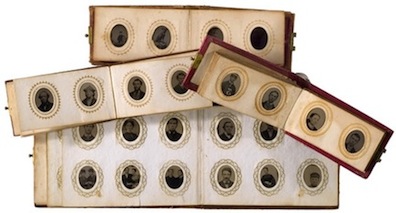Assignment: Read chapters 9 (c-prints) and 14 (rarer paper processes) in the textbook (free pdf version here or purchase hard copy here).
Though few photo collectors know it, it’s an easy lesson to learn.
There are four standard color photographic processes/prints: c-print (chromogentic), dye-transfer, Cibachrome and Polaroid. The popular significance attached to each process is the quality and durability of the images. Some have better images than others, and some images last longer than others. Brief summary is as follows:
chromogenic print (also known as c-print). Very common– most color snap shots, 8x10s, family photos, graduation photos, etc are c-prints. Early c-prints have a matte/fiber based back and glossy front, while more modern have smooth/plasticy backs and gossy fronts. They often have various Kodak, Fuji, Agfa and other photopaper brandings on back. The dye transfers and cibachromes don’t have these brandings. Older c-prints tend to fade and gain a magenta tone, while dye transfers and cibarchromes barely fade with age.
Polaroid: Common. Distinct look. Backs are plasticy and say Polaroid, Fuji Polaroid or Fujifilm on the back, the front border is matte while the central image area is glossy. They often have a larger bottom white border than the sides and top. Each photo is unique and almost always original.
Dye-transfer: Rare and high end/expensive. Used by fine art and for exhibits. Matte texture front and back. High quality images and do not fade over time. Digital prints can be on matte paper.
Cibachrome (aka Illfachrome): Scarce and high end. High quality, long lasting images, used in fine art and for exhibit photos. Ultra glossy fronts, common jet black borders, smooth plasticy backs. No photobranding (Kodak, Agfa, Fuji, other) on back. The fronts are so glossy it seems to be like the surface of a pool of water, and the images often have a 3D-like quality. My favorite process.

Homework questions for Assignment #625) How do you tell the difference between a dye transfer and a cibachrome photograph?
26) If a true color photo is matte/fibery on back and glossy on front, it is a c-print. True or false?
27) If someone shows you a ‘1950 color photo,’ what qualities would support that photo indeed indeed being old versus modern reprint?’
* * * *
Course Assignments:
